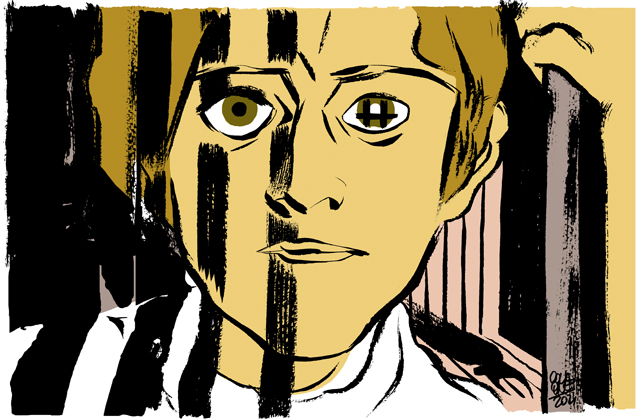The Room of the Other. From Spaces of Confinement to Spaces of Asylum Freeing
Abstract
The article investigates the enclosed space of asylum confinement and its transformations up to the opening advocated by the movements of contestation of institutionalized psychiatry. The history of former psychiatric hospital in Gorizia, where Franco Basaglia started the process of negation of the psychiatric institution, also through action on space, can help us read the stages of this transformation. An acknowledgment of the role of architecture differentiates him from Foucault (who however admires Basaglia’s experiments in Gorizia). The reading is carried on by analysing photographic documents, documentaries filmed in the park, and archive materials (texts and architectural drawings).
Such materials show how Basaglia fostered a new idea of architecture devised to support forms of resistance against the normalization imposed by the institution – but also by contemporary society. Brand new places enabling their residents/dwellers to find their own meaning in the place where they live.
Downloads
References
Babini, Valeria, Paola, Liberi tutti: manicomi e psichiatri in Italia: Una storia del novecento, Bologna, Il Mulino, 2009.
Bachelard, Gaston, La poétique de l’espace, Parigi, PUF, 1957, trad. it. La poetica dello spazio, Bari, Edizioni Dedalo, 2006.
Basaglia, Franco (ed.), L’Istituzione negata. Rapporto da un ospedale psichiatrico (1968), Milano, Baldini&Castoldi, 2010.Basaglia, Franco, Ongaro Basaglia, Franca (ed.), Morire di classe. La condizione manicomiale fotografata da Carla Cerati e Gianni Berengo Gardin, Torino, Einaudi, 1969.
Basaglia, Franco, Ongaro Basaglia, Franca (ed.), Crimini di pace. Ricerche sugli intellettuali e sui tecnici come addetti all’oppressione, Torino, Einaudi, 1975.
Basaglia, Franco, “Prefazione”, Santiano, Sergio, B come architettura, z come salute. Per un uomo che sembra doversi liberare, per sopravvivere, Perugia, Bertoni, 1980: 5.
Conolly, John, Trattamento del malato di mente senza metodi costrittivi (1856), Torino, Einaudi, 1976.
Di Vittorio, Pierangelo, Foucault e Basaglia. L’incontro tra genealogie e movimenti di base, Verona, Ombre Corte, 1999.
Di Vittorio, Pierangelo, “Togliersi la corona. Foucault e Basaglia”, aut aut, 351, 2011.
Foot, John, “Photography and radical psychiatry in Italy in the 1960s. The case of the photobook Morire di Classe (1969)”, History of Psychiatry, 26, 2015: 19-35.
Foucault, Michel, “Space, Knowledge and Power”, conversazione con Paul Rabinow, Skyline, marzo 1982:16-20, trad. it. “Spazio, sapere e potere”, Spazi altri. I luoghi delle eterotopie, Ed. Salvo Vaccaro, Udine-Milano, Mimesis, 2001: 53-72.
Foucault, Michel, Le pouvoir psychiatrique. Cours ou Collége de France (1973-1974), Paris, Gallimard, 2003, trad. it. Il potere psichiatrico. Corso al Collège de France (1973-1974), Milano, Feltrinelli, 2015.
Foucault, Michel, Dits et écrits. 1954-1988, Paris, Gallimard, 1994, vol. 2.
Goffman, Erving, Asylums. Essays on the social situation of mental patients and other inmates, New York, Anchor Books, Doubleday & Company, Inc., 1961, trad. it. di F. Ongaro Basaglia, Asylums. Le istituzioni totali: i meccanismi dell’esclusione e della violenza, Torino, Einaudi, 1968.
Guglielmi, Marina, Raccontare il manicomio. La macchina narrativa di Basaglia fra parole e immagini, Firenze, Franco Cesati Editore, 2018.
Minguzzi, Gian Franco – Basaglia, Franco – Ongaro Basaglia, Franca, “Exclusion, programmation et intégration”, Recherches, 5, 1967: 75-84.
Ospedale psichiatrico provinciale di Gorizia, L’, Gorizia 1933, testo stampato in occasione dell’inaugurazione presso la locale tipografia.
Pastor, Barbara, “Progettazione di ospedali: l’organizzazione dello spazio tra specializzazione e flessibilità, ovvero la ricerca del tipo neutro”, Maffioletti, Serena (ed.), La concretezza sperimentale. L’opera di Nani Valle, Padova-Venezia, Il Poligrafo 2016: 155-178.
Plesnicar, Marco, Un campo fecondissimo di vedute discordanti. L’ospedale psichiatrico di Gorizia. Francesco Giuseppe 1. Nascita e sviluppo dell’istituzione manicomiale nel dibattito politico provinciale (1861-1911), Mariano del Friuli, Edizioni della Laguna, 2011.
Scavuzzo, Giuseppina, Il Parco della guarigione infinita. Un dialogo tra architettura e psichiatria, Siracusa, LetteraVentidue, 2020.
Slavich, Antonio, All’ombra dei ciliegi giapponesi. Gorizia 1961, Merano, Edizioni alpha beta verlag, 2018.
Theodore, David, “The Decline of the Hospital as a Healing Machine”, Schrank, Sarah, Ekici, Didem (eds.) Healing Spaces, Modern Architecture and the Body, Abingdon, UK, Routledge, 2016.
Topp, Leslie, “Isolation, Privacy, Control and Privilege: Psychiatric Architecture and the Single Room”, Schrank, Sarah – Ekici, Didem (eds.) Healing Spaces, Modern Architecture and the Body, Abingdon, UK, Routledge, 2016.
Ead., Freedom and the Cage: Modern Architecture and Psychiatry in Central Europe, 1890–1914, Pennsylvania University Park, 2017.
Ead., “Single Rooms, Seclusion and the Non-Restraint Movement in British Asylums, 1838–1844”, Social History of Medicine, 31. 4, 2018: 754-773.
Weissbach, Karl, Wohnhauser (1902), Whitefish (MT), Kessinger Publishing, 2009.
Filmografia
Peltonen, Pirkko (dir.), La favola del serpente, 1968, Italia.
Copyright Notice
You are free to copy, distribute and transmit the work, and to adapt the work. You must attribute the work in the manner specified by the author or licensor (but not in any way that suggests that they endorse you or your use of the work).









